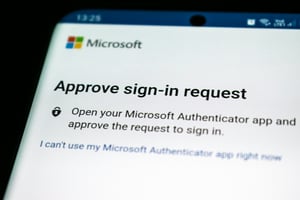In today's digital world, where our personal information is constantly at risk, it has become crucial to adopt strong security measures to protect our online accounts. Two measures that are often discussed are Single Sign-On (SSO) and Two-Factor Authentication (2FA), also known as Multi-Factor Authentication (MFA). While they may sound similar, they serve different purposes in securing our digital lives.
What is Single Sign-On?
SSO (Single Sign On) allows you to authenticate one time and then you can gain access to multiple platforms without having to log in every time. Imagine logging into your computer and effortlessly being granted access to various applications without the need to enter your password repeatedly.
However, it's crucial to note that SSO alone is not enough when cybersecurity is involved.
What is Multi-Factor Authentication?

Typically, this involves something physical that you possess, such as a smartphone or a physical authentication token. By combining something you know (like a password) with something you have (like your smartphone), MFA enhances the authenticity of your login.
When Should I Use Both MFA and SSO?
While using SSO to access multiple platforms is generally safe, it's important to ensure that the initial login platform uses MFA. For example, if you log into your computer with just your username and password, without a secondary authentication factor, using that login to automatically authorize your account into another application is no more secure than directly logging into that application.
However, if your computer login prompts you for a secondary code from an authenticator app (Microsoft Authenticator, Twilio Authy, Google Authenticator, etc.) text message, or any other form of MFA, then your account is properly authenticated. In these cases, it's safe to use SSO to access other applications (like Sage Intacct), using the already authenticated account.
There are situations where MFA might be required even when SSO is already in place. In these cases, launching the secondary application through SSO eliminates the need to enter your username and password, but you will still be prompted for an MFA code. This adds an extra layer of security, protecting against rare but potential "man-in-the-middle" attacks, where an authentication token is stolen and use to access your accounts.
So, while SSO simplifies our digital interactions, it's crucial to combine it with MFA to ensure a secure defense against unauthorized access. By using both SSO and MFA, we can access our personal accounts with confidence and peace of mind.